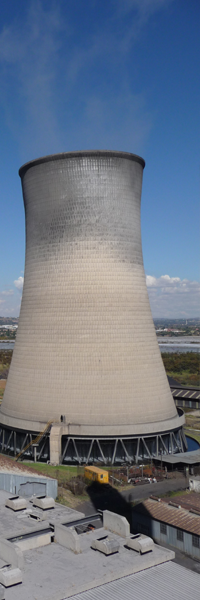Accuracy of Valuation Methodologies
The methodology utilised by your Valuation company will have a bearing on the accuracy of the values calculated. As we feel our Client should have sufficient information to enable them to make the best decision, we have put together a table that highlights the differences between the various methodologies.A Summary of the differences between the methodologies.
| Description | Valuation Methodology |
Comments | Accuracy |
|---|---|---|---|
| Throughput/Capacity Analysis |
The Throughput/Capacity analysis method values facilities from Cost vs. Capacity Curves. This method effectively values a theoretical facility, not the actual facility. The curves used in this method will usually be based on more modern and larger facilities. This means that using this method could lead to under valuation. |
Should be used for “Desk Top” exercises without a site visit. This is a quick and cheap Assessment and should be used only as a precursor to a more detailed valuation. For valuations which include a site visit, this method is inaccurate and unsuitable. AVC do not recommend this methodology unless the figures are for rule of thumb only. |
+/- 45% |
| Asset Register Manipulation |
Asset Register Manipulation (or bend and trend) values by escalating the original cost. This method is totally dependent upon the quality of the information provided. This method can potentially include items that are non-insurable and also exclude items that have been expenses or similar. This means that using this method could lead to under valuation and equally overvaluation. |
This should be used in conjunction with the above method for “Desk Top” exercises without a site visit. This is a quick and cheap Assessment and should be used only as a precursor to a more detailed valuation. For valuations which include a site visit, this method is inaccurate and unsuitable. AVC do not recommend this methodology unless the figures are for rule of thumb only. |
+/- 45% |
| “Walk Around” Assessment | This method uses one of the two methods above but supported by a very brief site survey.The aim of the site survey is to collect information on all the facilities not captured by the above methods and to ascertain whether the calculated figures are reasonable. | This method relies on a visual verification of values calculated from the above methods to improve on the accuracy. It is our experience that this is extremely difficult to achieve. The end result of this methodology is to increase the cost of the exercise without increasing the accuracy. AVC do not recommend this methodology. |
+/- 35% |
| Definitive Certifiable Valuation |
This method involves calculating a value for each major item of equipment. In addition costs for all the bulks (piping, instruments, electrics, civil's, structural steel etc.) Utilities including jetties, buildings etc are valued based on quantities established during the site survey. |
This method is detailed but at the same time not expensive. The figures can be reported to suit the Client and support the calculation of EML's. In our experience this is the only suitable and defendable methodology. AVC always recommend this methodology except for circumstances where the figures are for rule of thumb only or where there is a compelling reason which makes a site survey impossible, such as security etc. |
+/- 15% |
| Detailed Cost Estimate | This method involves obtaining a detailed bill of quantities for all items and materials. This is an extremely detailed and time consuming exercise. | This is a very expensive methodology and is not necessary for insurance valuations. AVC do not recommend this methodology for insurance valuations. |
+/- 5% |
If you would like any further information on the accuracy of valuation methodologies, please email us at valuations@avcltd.com



